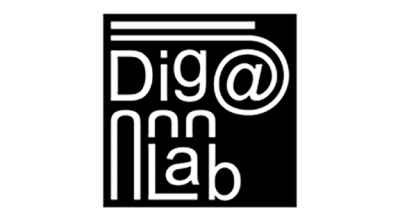Dig@Lab
Director: Maurizio Forte, Classical Studies and Art, Art History & Visual Studies
The name Dig@Lab recalls the main goal of this research lab, which is “digging for information”, looking for new interpretations at the intersection of archeology, remote sensing, cybernetics, heritage, computer science, neuroscience, cognitive science, art and history. More specifically, it is aimed at the investigating how the information is shaped, elaborated, stored and then culturally transmitted by different societies, with a focus on ancient civilizations. We like to say that the past cannot be “reconstructed” but “simulated”, then performed by digital simulations.
The digital workflow generated by our methodological approach includes data capturing, archiving and data management, virtual reality, augmented reality, gaming and simulation. Data capturing involves remote sensing (multispectral drones, GPR, digital photogrammetry, laser scanning), archaeological excavations and landscapes’ surveys. Data archiving involves the creation of 3D repositories (such as https://trajanspuzzle.trinity.duke.edu ), while VR applications are developed for the Duke DiVE (Duke Immersive Virtual Emvironment), Oculus Rift, Oculus Go, AR (augmented reality) and related systems. In the past five years, we have delivered several apps (some of them developed by Duke students) and two virtual museums in Italy: the virtual museum of Regium Lepidi (Reggio Emilia, https://diglab.org/portfolio/regiumlepidi-2200/) and the exhibition “The Trajan’s Puzzle” at the Museum of Imperial Fora in Rome (https://appadvice.com/app/basilica-ulpia-ar/1317616418; https://trajanspuzzle.trinity.duke.edu/installazioni-installations ). The virtual museums are permanent installations open to the public and hosted in historical and archaeological city-museums. The lab serves also a large community of undergrads, grads and PhD students and as well post-doc scholars in archaeology, history, classical studies, computer science, neuroscience and digital humanities in general.
The Dig@Lab has its home at Visual Studies (Smith Warehouse Bay 10) but it collaborates with several different departments at Duke such as Classical Studies, Nicholas School, Computer Science, Robotics and Institute for Brain Science. It can count on two post-docs, two PhD, 1 MA students, plus several undergrads. The lab is the ideal cross-disciplinary incubator for digital technologies and the humanities.
Media coverage (a selection):
Interview on Cyber-archeology at ABC Australia: http://www.abc.net.au/radionational/programs/futuretense/archaeology3a-current-threats2c-future-possibilities/6633840
Cyber Archaeology – 3D Modeling unpeels the Neolithic at Çatalhöyük in “World Archaeology”, n.61 Oct.-Nov.2013, https://www.world-archaeology.com/category/issues/issue-61/
A high tech look to ancient civilizations: http://today.duke.edu/2013/03/maurizioforte
Cyberarchaeology at the Duke University: http://www.youtube.com/watch?v=D1rKCycuE6E
Bass Connections: https://bassconnections.duke.edu/about/news/drawing-new-technologies-duke-team-reveals-ancient-city’s-transformation

